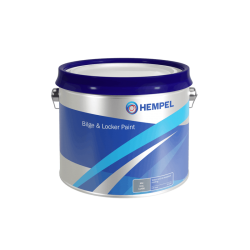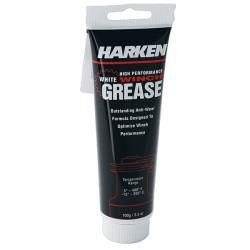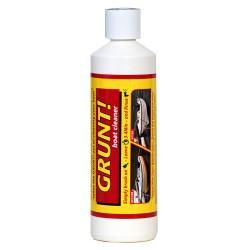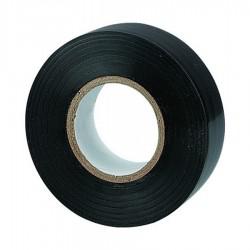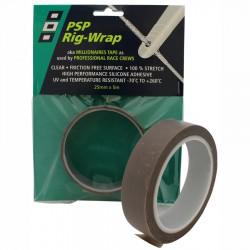If you own a boat or a yacht or are entrusted to look after one, either new or second-hand, you will be fully aware of how expensive this could be. However, maintaining your yacht is not just a great idea for safety purposes alone; it will also help to lengthen the boat's active working life, which will subsequently help to control those costs in the long run. Today, we will discuss how you can be proactive and on top of your yacht's maintenance.
Below, we have shared and broken down some core maintenance tasks to carry out in six key areas:
- Sails
- Rigging
- Bodywork and Hull
- Crew Safety
- Electrics
- Engine
Whether they are tasks carried out weekly, monthly, or even annually, keeping tabs on the current condition of your boat is key to keeping it functioning as best as possible for yourself. A routine is crucial to identifying and addressing issues before they escalate into problems.
Sails
Aim to check all the sails in your inventory monthly, meaning a close examination of all the parts most likely to need attention and a general scan of the entire sail area.
We have listed the key checkpoints below for you:
- Scan the entire sail area for potential weak points, e.g. a pinprick hole that could be the start of something much bigger
- Look for any signs of mould or staining, which could be addressed and restored with an appropriate cleaner, e.g. Grunt
- Inspect for chafe, especially where abrasion can be caused by constant movement against the mast, rigging or the deck - common examples are the clew, tack and head eyes, the foot of the genoa where it needs to be skirted over the guardrails, batten pockets, especially the pocket ends on the leech - stitching and whipping may provide a timely intervention
- Identify any rips and tears - Stitch and apply a suitable sail repair tape for small patches, or book the sail into a sailmaker for more serious repairs
Additionally, consider removing your sails entirely once a year to give them a deep clean.
Rigging
Please do not underestimate the importance of checking the mast and spreaders, the wire and rope rigging, and don't forget the guard wires and lifelines.
- Check the mast for any signs of stress, e.g. hairline fractures
- Ensure that all the T terminals are seated correctly in their apertures and that they are taking the load at the correct angle
- Test the spreaders for alignment and firmness in their positions
- Confirm that the spreader ends are correctly attached and any sail protection is intact, e.g. Spreader Tape or Millionaire's Tape
- Explore any possibility of corrosion, especially where two different metals are fixed together, e.g. fixing or backing plates on the mast
- Examine each fitting for unwarranted slack or 'play' due to wear, e.g. the gooseneck or loose fixings, e.g. rivets, self-tapping screws or bolts
- Establish that all terminals and connections, e.g. eyes, forks, toggles, and turnbuckles, are articulating freely to allow proper alignment
- Inspect the wire, looking for any sign of deformation or individual strands lifting or distorting - this is especially important where the wire enters the bottom terminal because that is where water collects
- Clean your stainless wire and fittings with a suitable cleaner, e.g. Super Stainless
- Scrutinise every pin and ring, ascertaining that they are not worn, are securely in position and that the chafe protection measures are satisfactory, e.g. Insulation Tape
- Don't forget to check the guard wires, lifelines and jackstays, too - pay particular attention to preventing them from snagging sails or crew hands
- Wash your ropes in freshwater; a minimal amount of detergent in a bucket will not be harmful, e.g. Boat Wash - rinse thoroughly in fresh water if you use any soap - do not use seawater - the object is not only to make them cleaner but also to remove the salt because it acts as an abrasive inside the rope
- Check all your lines throughout their length, looking for any uneven construction, deformation, or undue wear, especially where the rope turns corners in sheaves or blocks and passes through the jaws of jamming cleats and clutches.
- Worn areas may be served (a long whipping) to prolong the working life of the rope; otherwise, a replacement will be required
- Bumps, lumps, kinks and instances of the core poking through the outer cover of braided lines point to the two parts being out of sync. So - free the ends, smooth the rope as much as possible by fixing one end and running a firm grip in a gloved hand along the line to the other end - then stitch and whip the ends again.
Bodywork and Hull
Hopefully, your boat will not have suffered from a collision or received any high degree of damage recently. However, you should add a hull and deck inspection to your routine to spot minor dings and scratches before they deteriorate into a major repair. So, look to carry out an inspection once a month (or ideally even more often) to ensure your yacht remains in tip-top condition:
- Cast your eye over the whole deck for dents and scrapes.
- Establish that all the deck fittings are securely fastened with no signs of water ingress
- Clean and refinish your deck if any previous coating is no longer working successfully
- Examine the topsides.
- Scrutinise any part of the hull, keel, and rudder for damage whenever they become accessible, e.g. when drying out
- Watch for any bare patches of antifouling and a build-up of underwater growth
- Monitor all the sacrificial anodes and replace them before they erode too far.
Take the yacht out of the water annually to conduct a comprehensive review. This may seem costly, but it is worth carrying out to get a clear and full picture of the hull's condition and allow you to make amends should they be needed. In addition, having the boat out of the water will permit you to carry out any re-painting, anti-fouling or zinc replacement.
Crew Safety
Making sure that you and your fellow crew members are safe when on board is imperative, which is why we have listed some suggested daily checks to carry out before departure, along with a monthly routine to add to your to-do list:
Daily Checks
- All the required floatation devices are serviced, easily located onboard and in tip-top condition
- A suitable first aid kit is fully stocked and onboard
- The safety flares are dry and ready to hand in case of emergency
- Danbuoys and other man overboard recovery equipment are in good working order
Monthly Checks
- Check that both the first-aid kits and flares are within their expiry date
- Make sure that all fire extinguishers are accounted for, in their correct locations and have been thoroughly checked by a professional and tagged accordingly
- Make sure that all lifelines, rails and jackstays are in good working order
- Test the fire alarm and any other alarms that you may have onboard
Electrics
When it comes to looking after your boat electrics, adding these measures to your monthly routine can help to ensure safety and prevent any other issues from potentially arising:
- Test the batteries are fully operational and in good condition
- Check that all wires are safely and neatly secured with no exposures - if there is any damaged casing, cover (insulate) or renew it immediately
- Ensure that any wire connections are safe and sound
- Check that all fuses and breakers are working properly
- Check that all wires and batteries are dry and safe from any potential water damage
Engine
This area needs a lot of regular detailed care and attention. Therefore, with a mixture of daily, monthly, and yearly checks required, we have laid them out below for you to take note of and work out a method for yourself.
Daily Checks:
- Visually check the engine and the engine room
- Check the pulleys and their alignment
- Check the engine oil and transmission fluid levels
- Inspect that all belt tensions are correct
- Check the coolant and antifreeze levels
Monthly Checks:
- Check the engine oil filters
- Inspect and clean out the thru-hull fittings
- Check the raw water filter, pump and impeller
- Flush and clean the syphon break
- Inspect and, if necessary, change the heater exchanger anodes
Annual Checks:
- Bleed the fuel system
- Inspect all wires, nuts, and bolts are all in good working order
- Change over primary and secondary fuel filters
- Inspect and repair (should it be needed) any bodywork or damage to maintain proper insulation
- Check the propeller shaft for any damage and repair
This list is not exhaustive, but it should encourage you to create your detailed review and maintenance routine tailored to your yacht or boat and your sailing activity. A regular equipment audit and maintenance schedule should ensure that your yacht is well-maintained and ready to put to sea immediately. It will also help to keep yourself and everyone else onboard safe.
Ready to learn more? Check out our article ‘Seven Yacht Maintenance Tips’ or ‘Ten Things To Help You Enjoy Winter Sailing’. The Jimmy Green Team are always happy to assist you with any queries, so contact us if you need our help.
Main Menu
Main Menu
Back
Main Menu
Back
Main Menu
Back
Back
Main Menu
Back
Main Menu
Back
Back
Main Menu
Back
Main Menu
Main Menu
Back
Main Menu
Back
Back
Back
Back
Back
Back
Back
Back













